TL;DR
Place the TV in the alcove at seated eye level, not above the fireplace. Build it out with a shallow media unit or custom millwork so the screen sits near the front plane, hide the cables, and add base storage. If you skip a TV, the nook excels as a dry bar, compact office, or built-in bookcase with closed storage.
Why this little alcove matters more than you think
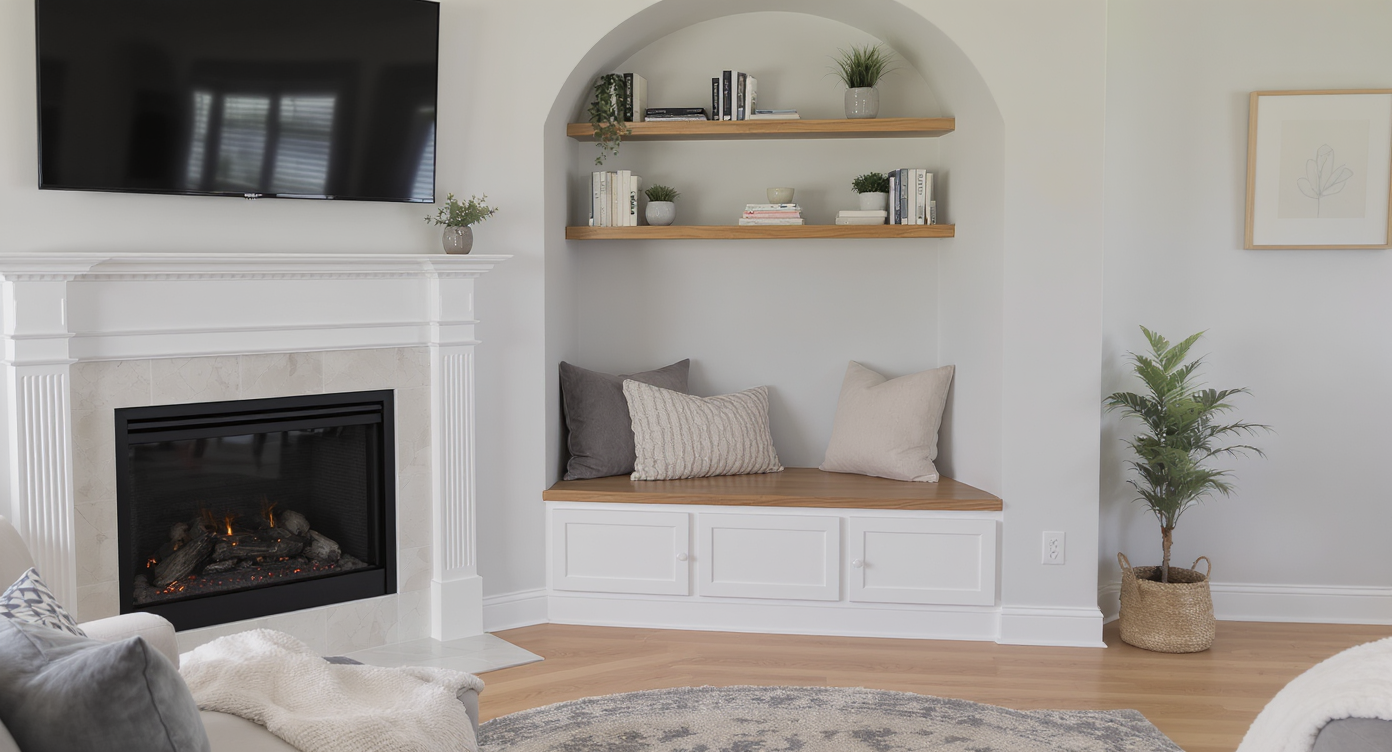
Maximize your wide alcove with seating and storage, balancing comfort and TV placement options.
Every home seems to have one: a shallow, wide alcove that stops you in your tracks. Is it for a TV, a bar, a bookshelf, or a reading bench? I recently heard from a couple in a near-identical standoff. One was set on a TV in the alcove because, what else goes there. The other wanted the TV over the fireplace and a bench with floating shelves in the niche.
Here is what usually happens in real homes: folks who mount a TV over a tall fireplace end up craning their necks. One homeowner told me, my neck hurts just thinking about it. Another person shared that they installed an 84 inch TV right in the alcove and never looked back. And more than a few people noticed the obvious clue in many new builds: power and media jacks baked into the alcove. It is a media nook waiting to be finished properly.
The smart plan for a shallow, wide living room nook
Short answer: Put the TV in the alcove. Do it ergonomically and make the niche work hard with storage and styling. Keep the fireplace for art, a mirror, or sculptural decor.
How to execute it well:
- Mount at seated eye level. Aim for the center of the screen at about 40 to 43 inches off the floor for typical sofas. A tilting or articulating mount helps fine-tune glare and angle.
- Bring the screen forward. Shallow niches can make a TV look recessed. Add a slim, wall-to-wall media unit or a false back panel so the screen sits closer to the room. It looks intentional and improves viewing.
- Hide the guts. Use 16 to 20 inch deep base cabinets with doors or drawers for components, games, and cords. Include a ventilated section for a receiver or mini fridge if you go the bar route later.
- Manage light. If a window sits beside the alcove, add light-filtering roller shades or lined curtains, and choose a low-glare mount. Position lamps so they do not reflect on the screen.
- Respect the walkway. Float the sofa so there is a clean path around the seating, then anchor with a rug. A narrow console table behind the sofa keeps it tidy and protects that path of travel.
Fireplace stays a secondary focal point. Over-fireplace mounting is rarely ideal here if the mantle is already high. Keep that spot for art, a tall branch arrangement, or layered frames. One designer sketched vertical decor flanking a similar fireplace to break up the boxy profile and lift the eye. It elevated the whole room without asking anyone to watch TV from the top bunk of a bunk bed.
If not a TV: This alcove still earns its keep. Top options include a dry bar with a wine fridge and glass storage, a compact office behind cabinet doors, or built-in shelves with base storage and a display zone for sculpture or a turntable.
Anecdote
A couple once insisted on mounting their TV above a tall mantle. After two movie nights, they admitted it was a mistake. Their eyes tracked upward, colors washed out, and the fireplace heat made them nervous. We shifted the TV into the alcove, built a slim media cabinet with a forward-floating panel, and layered art over the mantle. Two weeks later they told me they were finally using the room every night.
On the flip side, a homeowner with a wide niche mounted an 84 inch screen in the alcove and said they did not regret it at all. The trick was pulling the screen forward on a low-profile arm and adding base cabinets for clutter. It looked custom, not like a TV stuck in a hole.
Common pitfalls to avoid
- Mounting a TV too high. It seems natural to center the TV between mantle and ceiling, but that pushes the screen way above eye level. Result: neck strain and washed-out color. Fix it by targeting eye-level viewing and using a tilting mount if you must go a bit higher.
- Ignoring window glare. That big window next to the nook can bounce light directly into the screen. Plan for light control with roller shades or drapery, use a matte screen TV if possible, and angle the display slightly.
- Leaving cables exposed. A beautiful niche loses the plot when cords drape down the wall. Use an in-wall power kit or conduit, route components to the base cabinets, and add a simple IR repeater or RF remote so doors can stay closed.
- Cramping circulation. Parking a sofa right in the traffic lane frustrates daily life. Leave 36 inches for clear walkways and float furniture on a correctly sized rug to define the zone.
- Under-sizing the storage. Open shelves alone become clutter magnets. Include closed base units for the not-pretty stuff, and reserve the upper section for display and a few frequently used books.
Pro tips from designers and installers
- Frame the niche like architecture. Add slim face frames and a crown or shadow gap to make a built-in look original to the house. Painting the back of the alcove one shade deeper than the walls adds depth without heaviness.
- Plan for ventilation and sound. Perforated or slatted door panels over the soundbar and receiver keep airflow and remotes happy. Leave cable slack inside the cabinet so you can pull gear forward for service.
- Use a forward-floating panel. A 3/4 inch plywood or MDF panel wrapped in paint-grade veneer lets you mount the TV cleanly, pass wires behind it, and align the screen flush with surrounding trim.
- Glare-proof the layout. If the window is fixed, angle the TV a few degrees via an articulating mount and rotate seating so your primary sightline is perpendicular to the glass.
- Design with the future in mind. Add a spare conduit from cabinet to TV zone for tomorrow’s cable, and a couple of USB-C/AC outlets inside the base unit for game consoles or VR.
One homeowner turned a near-identical niche into a dry bar with paneled doors below and glass shelves above. They later swapped one shelf span for a TV when their habits changed, and the original millwork still looked intentional. That flexibility, planned up front, saved them a costly redesign.
Tools and inspiration
- Blue-tape mockup. Tape the TV outline at proposed height, sit at your sofa, and test for comfort. If your chin tips up, it is too high.
- In-wall power and cable kits. Kits with a recessed outlet and low-voltage pass-through keep cords hidden and to code.
- Articulating mounts with tilt. Pick a low-profile model with at least 5 degrees of tilt and a small pull-forward for access.
- Light control. Light-filtering roller shades or lined drapery on the adjacent window minimize reflections while keeping daytime brightness.
- Design previews. Use ReimagineHome to visualize the alcove as a media unit, bar, or bookcase. Generate a few variations, then choose the one that best suits your habits.
Visualization Scenario
Picture the alcove finished wall to wall in a soft, satin paint. A slim, flush panel frames the TV so the screen sits even with the surrounding trim. Below, three base cabinets hide the router, consoles, and board games. Evening light filters through a roller shade on the nearby window, the screen tilts a touch to cut glare, and the fireplace across the room glows under a simple piece of art. The sofa floats with a narrow console behind it, and there is a clear path through the room. Nothing feels awkward. Everything feels designed.
FAQ
- How high should a TV be in a living room? Aim for the center of the screen at seated eye level, roughly 40 to 43 inches from the floor for typical sofas. If you have a larger TV or taller seating, a small tilt makes longer sessions comfortable.
- What if the window causes glare? Install light-filtering or blackout shades, choose a low-glare TV finish, and use a tilting or articulating mount to angle the screen. Avoid placing table lamps directly opposite the TV.
- Can the alcove become a bar instead? Yes. Use 16 to 20 inch deep base cabinets with a durable counter, include a vented bay for a wine or beverage fridge, and add glass or wood shelves above with dimmable lighting.
- Is a reading bench a good use of a shallow niche? Usually not. Reading nooks shine when they have natural side support and depth. In a shallow, wide alcove, a freestanding reading chair and floor lamp nearby are more comfortable.
- What size TV fits a wide but shallow nook? Leave at least 3 to 6 inches of visual breathing room on each side if you are not doing wall-to-wall millwork. For viewing distance, a simple rule for 4K is screen size near distance (in inches) divided by about 1.2.
Bring it all together
Here is the thing: that wide, shallow alcove is not a problem. It is a gift. Use it to place the TV at the right height, build in smart storage, and let the fireplace be beautiful without the burden of everyday viewing.
I once consulted on a home where the TV went above a tall mantle. Within a month they called back with stiff necks and a request to move it. We rebuilt the niche as a low-slung media wall, added doors for the mess, and the room finally exhaled. Do it once, do it right, and your living room will handle movies, guests, and everyday life with ease.
.svg)

.svg)

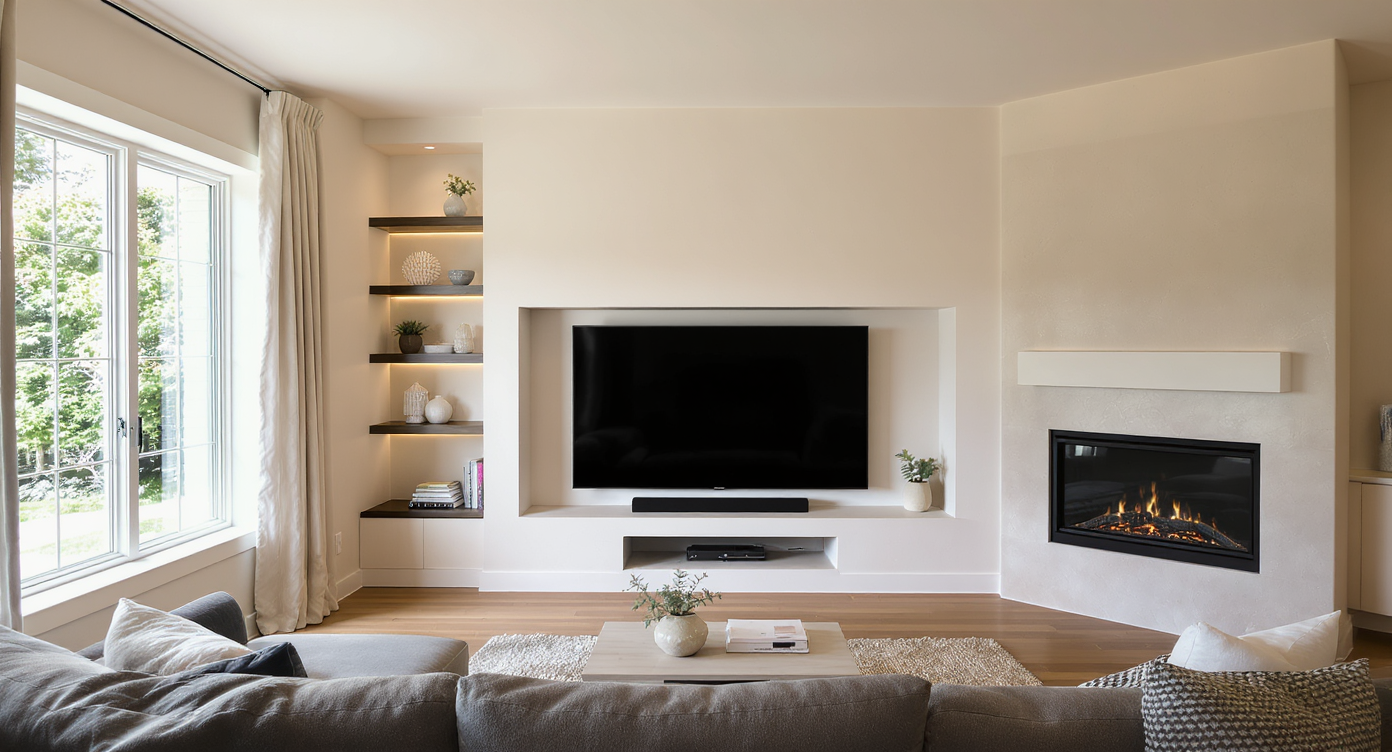



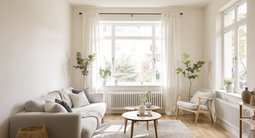
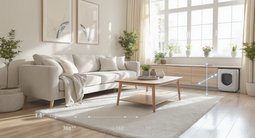
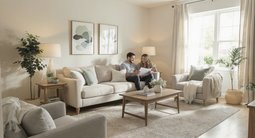



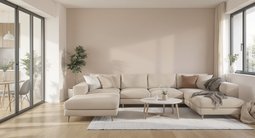


.png)